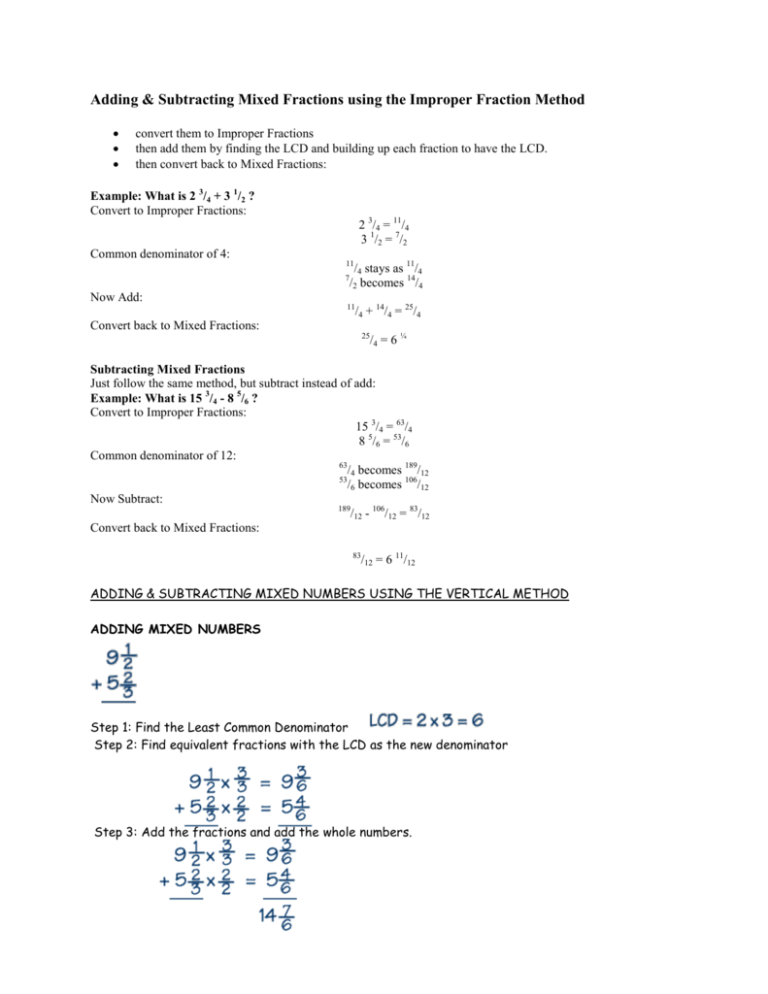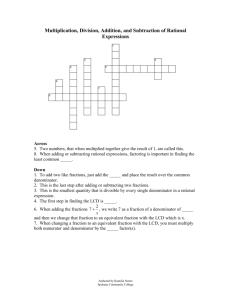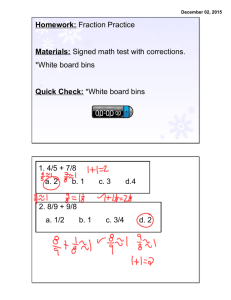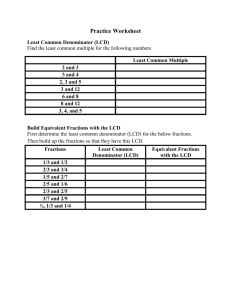Adding & Subtracting Mixed Fractions using the Improper Fraction
advertisement

Adding & Subtracting Mixed Fractions using the Improper Fraction Method convert them to Improper Fractions then add them by finding the LCD and building up each fraction to have the LCD. then convert back to Mixed Fractions: Example: What is 2 3/4 + 3 1/2 ? Convert to Improper Fractions: 2 3/4 = 11/4 3 1/2 = 7/2 Common denominator of 4: 11 /4 stays as 11/4 /2 becomes 14/4 7 Now Add: 11 /4 + 14/4 = 25/4 Convert back to Mixed Fractions: 25 /4 = 6 ¼ Subtracting Mixed Fractions Just follow the same method, but subtract instead of add: Example: What is 15 3/4 - 8 5/6 ? Convert to Improper Fractions: 15 3/4 = 63/4 8 5/6 = 53/6 Common denominator of 12: 63 /4 becomes 189/12 53 /6 becomes 106/12 Now Subtract: 189 /12 - 106/12 = 83/12 Convert back to Mixed Fractions: 83 /12 = 6 11/12 ADDING & SUBTRACTING MIXED NUMBERS USING THE VERTICAL METHOD ADDING MIXED NUMBERS Step 1: Find the Least Common Denominator Step 2: Find equivalent fractions with the LCD as the new denominator Step 3: Add the fractions and add the whole numbers. Step 4: Write your answer in lowest terms. = 14 + 1 1 1 = 15 6 6 SUBTRACTING MIXED NUMBERS The method is similar to that above, but after you have found the LCD and built up equivalent fractions and the numerator of the fraction you are subtracting is larger than the fraction you are subtracting from, you have to borrow. 5 12 2 1 3 3 Step 1: Find the Least Common Denominator. LCD of 3 and 12 is 12. Step 2: Find equivalent fractions with the LCD as the new denominator 5 5 3 12 12 2 4 8 1 1 3 4 12 3 Step 3: Since numerator 5 is less than the numerator 8, we must borrow, then subtract. 5 5 17 2 1 2 12 12 12 8 8 1 1 12 12 9 1 12 3 Step 4: Write your answer in lowest terms. 1 9 3 3 3 1 1 12 2 23 4








